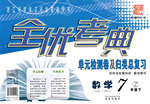题目内容
A survey has shown that what you do on a plane can be determined b y which nationality is listed on your passport.
y which nationality is listed on your passport.
According to the results of an international passenger survey, Australians are the biggest drinkers on board with 36 percent choosing to down the hatch, compared to 35 percent of Americans and 33 percent of Brits.
The Airline Passenger Experience Association(APEX) spoke to around 1,500 people, aged 18 and older, who have travelled by plane at least once during the last three months and were living in the United States, United Kingdom, Germany, Japan, China, Singapore, Australia and Brazil.
The results found Chinese travelers are most likely to nod off once the seat-belt sign switches off. They are also the first to take out their credit card for some in-flight shopping and the biggest fans of gaming. Americans on the other hand like to use their time in the air more productively—when not drinking—choosing to work while flying at 35,000 feet.
Meanwhile, Brits and Germans are the best at making chat with random strangers—spending 50 percent more time than any other nationality. Comparatively, Brazilians conduct their conversations online via email, messaging apps or social media.
Despite plane food having a bad reputation, seven out of ten interviewees said they were happy to eat up on the selection of in-flight snacks and meals. In-flight magazines were also popular with four out of five passengers.
The international flyers did however express their desire for better in-flight entertainment. “The industry has greatly improved the comfort, entertainment and on board service, and passengers are accepting those improvements” said Russell Lemieux, APEX executive director. “At the same time, passengers are demanding more from their air travel experiences which will drive more improvements touching all aspects of the journey. ” he added.
1.What can you probably see in the flight according to the passage?
A. Brazilians choose to drink.
B. Americans do in-flight shopping.
C. Germans chat to kill the time.
D. The Chinese switch off the seat-belt sign.
2.When on board the plane, ______.
A. passengers from one nation have little in common
B. most passengers like to read in-flight magazines
C. more than half of the passengers don’t enjoy plane food
D. most people tend to use in-flight time to have a good sleep.
3.What can we learn from the last paragraph?
A. Flyers care little about entertainment.
B. Flyers are not satisfied with the improvements.
C. Flyers are expecting better flight experiences.
D. Flyers have more and more demands from airlines.
4.What’s the purpose of the passage?
A. To entertain readers with interesting stories.
B. To encourage people to behave well in public.
C. To criticize impolite behaviors on the plane.
D. To inform readers of the results of a survey.
 全优考典单元检测卷及归类总复习系列答案
全优考典单元检测卷及归类总复习系列答案

 ange their attitudes toward others
ange their attitudes toward others